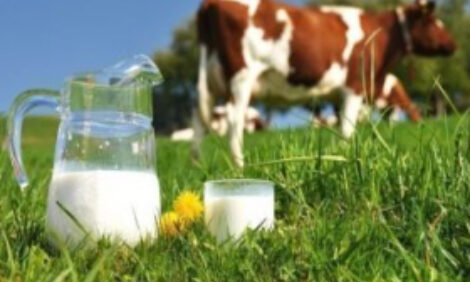



Initiative to Improve Sharing of Food Chain Information
UK - An initiative has been launched in the UK to ensure more information about meat inspections in the abattoir is passed back to the farmer to help improve the health and welfare of livestock.At a meeting hosted by the Agricultural and Horticultural Development Board’s, pig, sheep and cattle divisions, the meat and livestock sectors resolved to work with the Food Standards Agency to build systems for Food Chain Information to be passed backwards and forwards along the supply chain more efficiently.
The meeting held at the AHDB headquarters in Stoneleigh, Warwickshire, heard that while systems existed and were being developed for the pig and poultry sectors little informations about the health and condition of animals being delivered to slaughterhouses was being shared in the cattle and sheep sectors.
Christine Walsh, business development manager for cattle and sheep at the AHDB said that food chain information needs to be kept as it is a legislative requirement.
She said that a report published in 2013 had called for improvements in food chain information reporting.
“In pork and poultry it has been taken to a level, where it is of value to the pig and poultry sector, however it needs to be more relevant to the cattle and sheep sectors,” she said.

She said that at present the farmer has to provide information on the health and condition of animals that are being sent for slaughter to the food business operator and this information can have a bearing on how the animal is handled in the abattoir and the timing of slaughter.
Information that has to be delivered to the slaughterhouse includes details of medicines animals have been prescribed and the withdrawal periods, veterinary records, disease information, holding times and further information on the animal’s condition.
However, an attitude had been built up on the collection and communication of information that it was becoming merely a “tick box exercise” and bore little relevance for the meat processor.
Mrs Walsh said that there was a lack of trust in the industry.
In the poultry sector, she added, the information was delivered to the food business operator well in advance of the arrival of the birds for slaughter and the background information was being used to make decisions on slaughtering and improving efficiency and effectiveness on the line.
However she said that this was not being done for cattle and sheep.
At the slaughterhouse, the collection and communication of inspection results should collate information on ante-mortem inspection in the lairage about the fitness and health of animals and the post mortem inspections should deliver information about health and any disease conditions found, but little of this information was being passed back to the farmer, who could use it to take action to improve the health and condition of the animals on the farm.
Mrs Walsh said that there are also inconsistencies in the food businesses about how the inspection information on the slaughter line is being collected and used so that there is often inadequate information being collected.
She called for:
- a risk analysis for each species to be carried out
- the provision of a booklet on key issues the producer needs to provide in the food chain information report
- trigger points for key issues included on the food chain information report
- farmer training on food chain information
- the provision of food chain information in advance to the food business operator
- a system of verifying farmer compliance
- training for food business operators
- improvements in the collection and communication of inspection results
- improvements in the collection and communication of inspection results in the cattle and sheep sectors, including training for official vets and meat inspectors
- links with assurance schemes
Vet, Dr Gavin Morris, the group primary technical and animal welfare manager at meat processor Dunbia, said that while much of the information that was being delivered by the farmer to the processor was not relevant for production, it was relevant further down the line to the retailer and consumer who wanted to know and understand the provenance of the animals and meat.

However, he said that if the information from the farmer proves inaccurate it could have heavy consequences of a major food recall.
He added that for the farmer, the information that was collected on the line was relevant to help improve health and welfare practices on the farm.
He said that Dunbia is already in talks with the National Sheep Association, the Sheep Veterinary Association, the National Beef Association and the British Cattle Veterinary Association about ways of improving and sharing the information gained in the slaughter line inspections.
The AHDB seminar has also resolved for the beef and sheep sectors to work with the Food Standards Agency to draw up a list of essential disease and welfare issues that need to be included in the food chain information and to investigate ways that the information can be shared with farmers and others along the supply chain.



